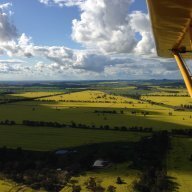-
Posts
1,061 -
Joined
-
Last visited
-
Days Won
14

Roundsounds replied to slb's topic in AUS/NZ General Discussion

Roundsounds replied to slb's topic in AUS/NZ General Discussion

Roundsounds replied to slb's topic in AUS/NZ General Discussion

Roundsounds replied to farri's topic in AUS/NZ General Discussion

Roundsounds replied to farri's topic in AUS/NZ General Discussion

Roundsounds replied to ave8rr's topic in Aircraft Incidents and Accidents

Roundsounds replied to ave8rr's topic in Aircraft Incidents and Accidents

Roundsounds replied to old man emu's topic in AUS/NZ General Discussion

Roundsounds replied to old man emu's topic in AUS/NZ General Discussion

Roundsounds replied to mariosabogal's topic in Student Pilot & Further Learning

Roundsounds replied to kasper's topic in Governing Bodies

Roundsounds replied to kasper's topic in Governing Bodies

